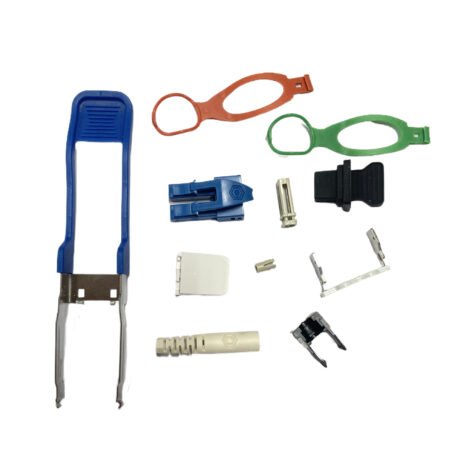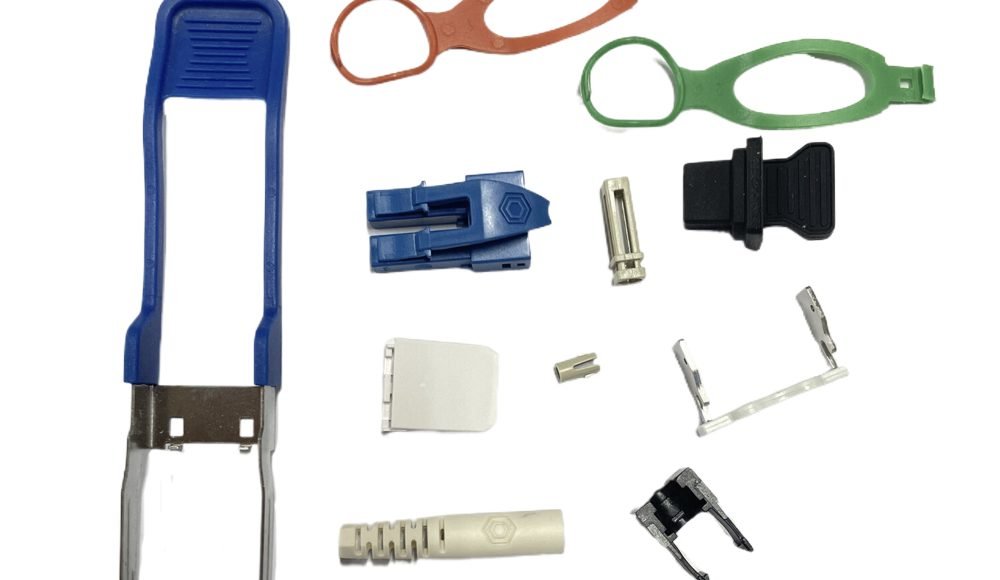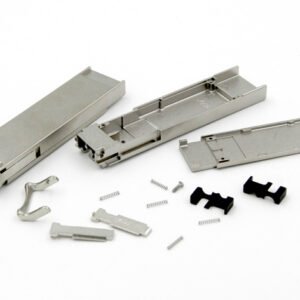Injection Mould
Injection mould is a highly regarded manufacturing process that has found extensive application in various industries, including the production of optical transceiver housing.The core of injection mould is the melting of materials. Usually thermoplastic, they are then injected into molds to form the desired shape. The material solidifies in the mold, resulting in a highly accurate and consistent final product.

Importance
The importance of injection mould in the housing of optical transceivers cannot be overemphasized. Optical transceivers are important components in telecommunications and data transmission applications. In these applications, shell integrity is crucial to ensure performance and lifespan. Injection molds help create complex designs and shapes with strict tolerances. This is crucial for installing small, delicate optical components without compromising functionality or reliability.
High-precision thermoplastics are commonly employed in this process due to their excellent physical properties, such as stability, durability, and resistance to environmental factors. Polymers like polycarbonate (PC), polybutylene terephthalate (PBT), and polyamide (PA) are frequently selected for their ability to maintain structural integrity under various operational conditions.
Advantage
The preference for injection mould in the production of optical transceiver housings is driven by several key factors. This process allows for the mass production of identical parts with extremely high precision, making it an ideal choice for industries that require large-scale production. In addition, the repeatability of injection molding ensures that each unit meets strict quality standards. This is necessary for optical transceivers that require long-term stable operation.
Economically speaking, injection molding provides significant benefits. The ability to rapidly produce large quantities of products reduces labor costs and minimizes material waste to the greatest extent possible. Although the cost of molds is initially high, it is offset by large-scale production, and as the production scale expands, the unit cost will also decrease. This cost-effectiveness, coupled with the excellent quality and precision of the final product, highlights why injection molding remains the preferred manufacturing method in the optical transceiver industry.
Benefits
Injection molding has many advantages in the manufacturing of optical transceiver housings. One of its most important benefits is the ability to achieve high product consistency and quality. The precision of the injection molding process ensures that each unit produced strictly complies with design specifications, which is crucial for maintaining the optical performance of the transceiver. In addition, this method allows for enhanced mechanical performance, including strength and durability. This is crucial for the reliability and lifespan of the optical transceiver housing.
Moreover, injection mould facilitates the incorporation of intricate design features necessary for advanced optical performance. It allows for complex geometries that would be challenging or impossible to achieve with other manufacturing methods. This flexibility supports innovative design solutions that can lead to improved performance and more compact transceiver modules.
Challenges
However, using injection mould for optical transceiver housings is not without challenges. The initial setup cost may be high. Because it requires specialized equipment and tools, this could be a huge financial investment. In addition, this process requires strict quality control to ensure that the optical performance of the casing is not affected during the production process. Any deviation in molding parameters may lead to defects that affect the functionality of the transceiver.
Material selection also poses potential limitations. While there are many materials compatible with injection mould, not all may meet the optical clarity and stability requirements essential for high-performing transceivers. Careful consideration is needed to select materials that balance performance, cost, and manufacturability.
Despite these challenges, real-world applications have proven the successful use of injection molds in optical transceiver housings. The advanced pouring system and improved mold design further enhance the efficiency and capability of the process. Continuous development focuses on optimizing material properties and reducing costs.
A case in point is the recent success of a leading telecommunications company that employed injection molding to produce housings for their latest generation of optical transceivers. They use high-precision molds and cutting-edge materials to manufacture shells that not only meet but also exceed industry standards. This highlights the enormous potential of injection molding in this high-tech field.
We sincerely hope to cooperate with you to build our future together!




